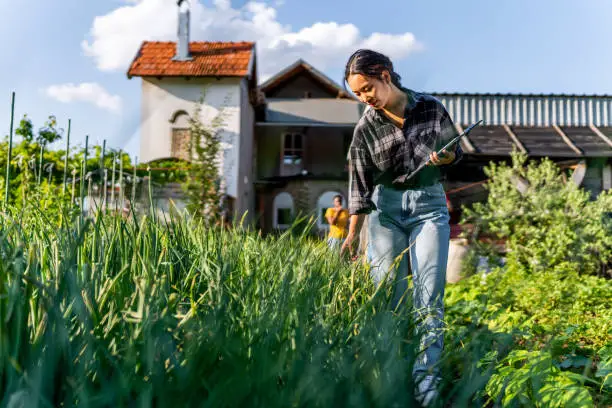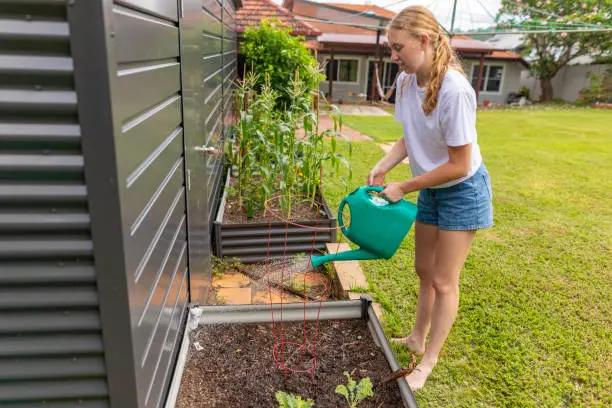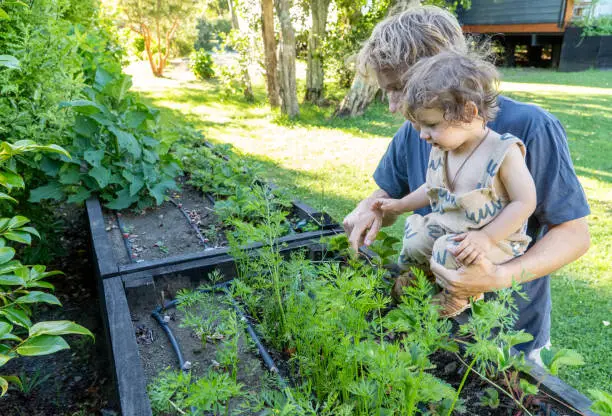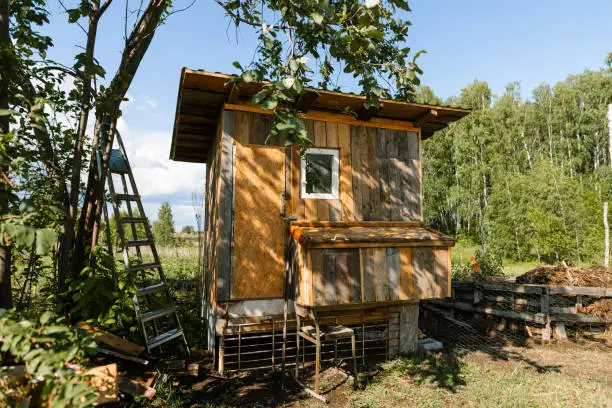Have you considered turning your backyard homesteading into a lush food garden? Consider it your own farmers’ market in phases. However, gardening is more than merely throwing seeds in the hope. Timing matters. Let’s go season-by-season to harvest like a pro.
Spring: Awakening
Spring is when Mother Nature sheds her winter cloak and begins to work. Cool-season crops that flourish in mild temperatures are ideal now.
Lettuce and spinach: Like garden birds, these lush greens are early. They enjoy chilly weather and grow swiftly. Plant them when the soil can be worked, usually in late March or early April.
Think of peas as spring vegetable marathoners. They love cooler conditions but mature slower. Direct-sow them in early spring.
Radishes increase and can be harvested in 30 days. Ideal for impatient gardeners!
Summer: The Heatwave
Summer is for sun-loving plants that thrive in hot weather.
Tomatoes are summer garden rock stars. Plant seedlings indoors six weeks before the final frost date and transplant them outside when warm.

Cucumbers and refreshing cucumbers are great for salads and pickling in summer. When the frost is gone, direct sow.
Zucchinis grow quicker than small-town gossip! Plant them when it’s consistently warm, and you’ll have too many zucchinis by midsummer.
Fall: The Second Wind
Fall is another chance to plant cool-weather crops before winter.
Broccoli likes chilly weather but needs a head start. Seed is planted indoors in midsummer and transplanted outdoors in late summer or early fall.
Root ninja’s carrots grow underground without your notice! Sow seeds directly into the soil for fall harvest in late July–August.
Kale, like that pressure-tolerant companion, tastes better after a mild frost! Late summer planting yields fall greens.
Winter is quiet.
Some resilient vegetables can survive winter with a bit of help from you.
Garlic is nature’s time capsule—plant it in fall, let it sleep through winter, and it blooms in spring! Plant cloves late fall before freezing.
Spinach again: Cold temperatures make spinach challenging. Replant it in late fall for an early spring harvest next year!
Tips and Tricks for Each Season
1. Soil Health Matters: The soil must be rich and drain well, like your garden’s foundation.
2. Use water wisely: Overwatering is as terrible as underwatering; be consistent.
3. Companion Planting: Tomatoes and basil get along.
4. Chemical-Free Pest Control: Natural solutions include neem oil and helpful insects.
5. Rotate crops annually: This reduces soil depletion and pests.
6. Mulching Matters: Mulch prevents weeds and maintains moisture.
7. Note what works and doesn’t each season to better next year.
8. Have Fun! Gardening should be fun, not a chore!
A luxuriant vegetable garden turns your backyard into a farmers’ market. Gardening success depends on time and plant choice. Let’s try seasonal planting for abundant crops.

Spring, awakening
After winter, spring arrives. Mellow-weather cool-season crops are best. Early planting in late March or early April is ideal for lettuce and spinach, which increase in cold weather. For cooler weather, direct-sow peas early. Radishes mature in 30 days, perfect for eager gardeners.
Summer: Heatwave
Summer is for sun-loving plants. Summer garden superstar tomatoes should be planted indoors after the last frost. When direct-sown after frost, cucumbers thrive and provide pleasant salads and pickles. Zucchinis proliferate, so plant them in warm conditions.
Fall: Second Wind
Fall gives cool-weather crops another opportunity. Broccoli needs a head start, so seed indoors in midsummer and transplant in late summer or early fall. Root ninja carrots grow undetected underground and should be sown straight in late July-August for fall harvest. Kale tastes better after a frost, so plant it in late summer.
Winter is quiet.
With care, some veggies can survive winter. Fall-planted garlic grows in spring. Late fall replanting of cold-hardy spinach yields early spring harvests.
Harmonize Your Backyard Homestead with Companion Planting
Have you noticed how some plants thrive together? Maybe they have a secret handshake. The wild world of companion planting, where plants cooperate and benefit one other. Begin this gardening dance.
Tomatoes and Basil: Dynamic Pair
Classic pairings: tomatoes and basil, peanut butter and jelly. Basil improves tomato growth and tastes fantastic in spaghetti sauce. It deters tomato-leaf-eating insects. Basil’s fragrance enhances tomato flavor. Plant them together and watch the magic happen.
Carrots with Onions: Heavenly Pair
Carrot fly is a carrot enemy. But guess what? Onions repel them! Onions’ pungent smell deters carrot flies, keeping carrots underground. Since carrots and onions have distinct root depths, they don’t compete for nutrition. Imagine a bodyguard who doesn’t eat.
Corn, Beans, Squash—The Three Sisters
Native American agriculture has bonded this group for millennia. Corn makes a natural trellis for beans, and the soil nitrogen from beans aids corn and squash. And squash? As live mulch, its vast leaves shade weeds and moisten the soil. Discuss teamwork!
Lettuce and Radishes: Fast Friends
Not requiring much room or deep soil, lettuce grows swiftly. Radishes mature faster—usually 30 days—and loosen the soil as they grow downward. If planted together, radishes will be harvested before lettuce needs additional space.
Cucumbers, Nasturtiums: Pest Patrol
Aphids and beetles quickly attack cucumbers. Nasturtiums, a colorful flowering plant, keep harmful pests away from cucumbers and beautify your garden. Sacrificial lambs and nasturtiums protect cucumbers.
Spinach with strawberries: ground cover galore
Strawberry runners are everywhere, while spinach grows low. They go well together because spinach provides ground cover before strawberries grow.
Peppers and Marigolds Protect
Marigolds repel nematodes, which damage pepper roots and other plants—plant marigolds around peppers for their color and protection.
Garlic All Over!
Like that party-friendly friend, garlic fits virtually anywhere in your garden! Its powerful smell repels aphids, spider mites, Japanese beetles, and more! Add garlic cloves to roses or fruit trees—they’ll appreciate you.
Brassicas with Aromatic Herbs
Broccoli and cauliflower attract many insects, including cabbage moths. If natural predators attracted by aromatic herbs like dill and rosemary are unchecked, these insects will lay eggs on leaves and feed on crops quickly!
Time for Personal Stories:
My first vegetable garden was a disaster, but I accidentally paired tomatoes with basil after hearing an old neighbor lady’s advice, which seemed beautiful then. She was right! That year, my tomato output was tasty, and I’ve never looked back since adopting her tip religiously every season—almost like a religious observance!
Plants benefit from companion planting. Tomatoes and basil thrive together and repel pests. Carrots and onions’ varied root levels repel carrot flies. The Three Sisters—corn, beans, and squash—represent traditional agricultural collaboration. Radishes and lettuce share space, and nasturtiums discourage pests for cucumbers. Spinach and strawberries cover the ground, while peppers and marigolds deter nematodes. Garlic repels pests practically anywhere, while aromatic herbs protect brassicas.





Leave a Reply
You must be logged in to post a comment.